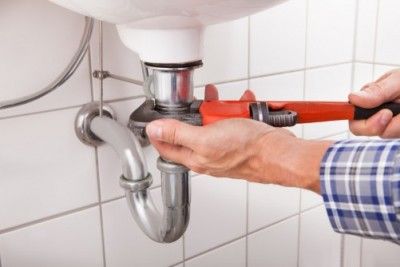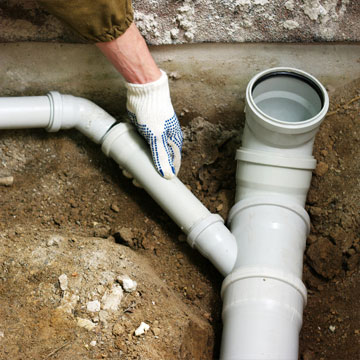Why Your Property's Plumbing System Works: Structure
Why Your Property's Plumbing System Works: Structure
Blog Article
Just how do you really feel in regards to Understanding Your Home's Plumbing Anatomy?

Recognizing exactly how your home's pipes system functions is essential for every single house owner. From delivering clean water for alcohol consumption, cooking, and showering to safely eliminating wastewater, a properly maintained pipes system is important for your family members's wellness and comfort. In this detailed overview, we'll explore the complex network that makes up your home's pipes and deal suggestions on maintenance, upgrades, and managing common problems.
Intro
Your home's pipes system is more than just a network of pipes; it's a complicated system that guarantees you have accessibility to clean water and effective wastewater elimination. Recognizing its components and just how they work together can assist you protect against expensive repair work and guarantee everything runs smoothly.
Basic Components of a Plumbing System
Pipes and Tubes
At the heart of your plumbing system are the pipelines and tubes that carry water throughout your home. These can be constructed from numerous materials such as copper, PVC, or PEX, each with its benefits in terms of sturdiness and cost-effectiveness.
Components: Sinks, Toilets, Showers, etc.
Components like sinks, toilets, showers, and bath tubs are where water is used in your house. Understanding exactly how these fixtures link to the plumbing system assists in identifying troubles and preparing upgrades.
Shutoffs and Shut-off Points
Shutoffs regulate the flow of water in your plumbing system. Shut-off shutoffs are vital throughout emergencies or when you require to make repairs, enabling you to separate parts of the system without disrupting water flow to the whole house.
Water System
Key Water Line
The main water line links your home to the metropolitan water supply or a personal well. It's where water enters your home and is dispersed to numerous components.
Water Meter and Stress Regulator
The water meter steps your water use, while a stress regulatory authority ensures that water moves at a safe pressure throughout your home's pipes system, preventing damage to pipes and fixtures.
Cold Water vs. Warm water Lines
Comprehending the difference in between cold water lines, which supply water directly from the primary, and warm water lines, which bring warmed water from the hot water heater, helps in troubleshooting and planning for upgrades.
Drain System
Drain Pipes Piping and Traps
Drain pipelines lug wastewater away from sinks, showers, and toilets to the drain or sewage-disposal tank. Traps avoid drain gases from entering your home and additionally trap debris that could trigger blockages.
Air flow Pipelines
Air flow pipelines permit air right into the drain system, stopping suction that can reduce water drainage and create catches to vacant. Appropriate air flow is necessary for keeping the honesty of your pipes system.
Relevance of Appropriate Drain
Making sure correct drainage avoids back-ups and water damages. Routinely cleaning up drains and keeping catches can protect against pricey fixings and expand the life of your plumbing system.
Water Heating Unit
Sorts Of Water Heaters
Water heaters can be tankless or conventional tank-style. Tankless heating units warm water as needed, while tanks store warmed water for prompt usage.
Exactly How Water Heaters Connect to the Plumbing System
Understanding exactly how water heaters connect to both the cold water supply and hot water circulation lines assists in detecting problems like inadequate warm water or leakages.
Maintenance Tips for Water Heaters
Frequently flushing your water heater to get rid of sediment, examining the temperature level settings, and evaluating for leaks can extend its life-span and enhance energy performance.
Typical Plumbing Concerns
Leakages and Their Causes
Leakages can happen as a result of aging pipes, loosened fittings, or high water pressure. Resolving leakages quickly prevents water damages and mold development.
Blockages and Blockages
Clogs in drains and commodes are commonly caused by purging non-flushable items or a build-up of grease and hair. Making use of drain displays and being mindful of what goes down your drains can protect against clogs.
Indicators of Plumbing Issues to Watch For
Low tide pressure, sluggish drains pipes, foul odors, or unusually high water costs are signs of possible plumbing troubles that should be dealt with immediately.
Plumbing Upkeep Tips
Normal Evaluations and Checks
Set up annual pipes evaluations to capture issues early. Try to find signs of leakages, rust, or mineral build-up in faucets and showerheads.
Do It Yourself Maintenance Tasks
Basic tasks like cleansing tap aerators, checking for bathroom leakages using color tablet computers, or protecting subjected pipelines in cold climates can protect against major plumbing concerns.
When to Call a Specialist Plumbing Professional
Know when a pipes issue needs specialist know-how. Trying complicated repairs without proper understanding can result in even more damages and higher repair work prices.
Updating Your Pipes System
Factors for Updating
Updating to water-efficient fixtures or changing old pipes can boost water top quality, minimize water costs, and increase the value of your home.
Modern Pipes Technologies and Their Benefits
Explore technologies like smart leak detectors, water-saving toilets, and energy-efficient hot water heater that can conserve cash and decrease environmental impact.
Expense Considerations and ROI
Calculate the upfront prices versus long-lasting cost savings when thinking about plumbing upgrades. Lots of upgrades pay for themselves with reduced utility costs and fewer fixings.
Environmental Influence and Conservation
Water-Saving Fixtures and Devices
Setting up low-flow faucets, showerheads, and bathrooms can significantly minimize water use without giving up performance.
Tips for Minimizing Water Usage
Easy habits like taking care of leakages immediately, taking much shorter showers, and running complete lots of washing and meals can save water and lower your utility bills.
Eco-Friendly Plumbing Options
Consider lasting plumbing materials like bamboo for flooring, which is durable and eco-friendly, or recycled glass for counter tops.
Emergency Preparedness
Steps to Take Throughout a Plumbing Emergency
Know where your shut-off shutoffs lie and just how to shut off the water system in case of a burst pipe or major leakage.
Relevance of Having Emergency Situation Contacts Useful
Maintain get in touch with info for regional plumbers or emergency situation solutions easily available for fast response during a pipes dilemma.
DIY Emergency Fixes (When Relevant).
Momentary repairs like utilizing air duct tape to patch a dripping pipeline or placing a bucket under a trickling faucet can minimize damages up until a professional plumber gets here.
Final thought.
Understanding the makeup of your home's pipes system encourages you to keep it effectively, conserving time and money on repairs. By complying with regular upkeep routines and remaining notified about contemporary plumbing modern technologies, you can ensure your pipes system operates efficiently for years to find.
HOW YOUR PLUMBING SYSTEM WORKS
Which Pipes Do What?
Blue lines = fresh water supply entering the building
Red lines = hot water supply entering the building
Grey lines = pipes carrying waste away from the building and venting pipes carrying gases away from the building (through the roof)
YOUR MAIN PLUMBING SYSTEMS
There are two main plumbing systems that support your home s basic plumbing needs one that brings clean water into your home, and one that sends dirty water away from your home. Connected to the toilet, bath, shower, and other faucets in your home, these two systems keep your water flowing in the right directions.
ACCESSING FRESH WATER
Fresh and clean water is brought into your home through the main water supply line . Filtered through one pipe, this water is pressured to flow into the various fixtures in your home at any given time.
This water can be sourced from a well located on your property, a pond or river (mostly cottages), or, as in most cases, from the city s municipal water treatment centre. However, it is important to note that water that is untreated, such as the water siphoned from ponds or rivers, may not be safe to drink. Personal water supplies always need to be treated for hardness and contaminants before consumed.
MUNICIPAL WATER SUPPLIES
Improve taste and odour
Remove sediment
Eliminate hardness
Reduce chlorine
COLD WATER SUPPLY VS. HOT WATER SUPPLY
Cold water flows into your home or building through the service line, which then distributes hot or cold water to your fixtures. This line is most commonly run through a central column that runs floor to floor. Hot water runs in short and straight pipes as the longer the pipeline, the more heat that will be lost in the transfer. Having shorter pipes also allows residents to access hot water more quickly.
WASTE WATER SYSTEM
Your wastewater system is divided into two parts pipes that send wastewater away from your home and venting pipes that send sewer gas away from your home. Sewage water travels through pipes that flush the water and waste towards local sewers that are operated and managed by your city or town. Most sewer systems rely on gravity to move the wastewater to where it needs to go.
The further away from your toilet or sink, the larger wastewater pipes become. This allows for waste to be disposed of from various parts of your home or business at once without pipe blockages. The angle and flow of these pipes are also essential for keeping your waste pipes clear of build up.
https://harrisplumbing.ca/how-your-home-plumbing-system-works/

HOW YOUR PLUMBING SYSTEM WORKS
Which Pipes Do What?
YOUR MAIN PLUMBING SYSTEMS
There are two main plumbing systems that support your home s basic plumbing needs one that brings clean water into your home, and one that sends dirty water away from your home. Connected to the toilet, bath, shower, and other faucets in your home, these two systems keep your water flowing in the right directions.
ACCESSING FRESH WATER
Fresh and clean water is brought into your home through the main water supply line . Filtered through one pipe, this water is pressured to flow into the various fixtures in your home at any given time.
This water can be sourced from a well located on your property, a pond or river (mostly cottages), or, as in most cases, from the city s municipal water treatment centre. However, it is important to note that water that is untreated, such as the water siphoned from ponds or rivers, may not be safe to drink. Personal water supplies always need to be treated for hardness and contaminants before consumed.
MUNICIPAL WATER SUPPLIES
COLD WATER SUPPLY VS. HOT WATER SUPPLY
Cold water flows into your home or building through the service line, which then distributes hot or cold water to your fixtures. This line is most commonly run through a central column that runs floor to floor. Hot water runs in short and straight pipes as the longer the pipeline, the more heat that will be lost in the transfer. Having shorter pipes also allows residents to access hot water more quickly.
WASTE WATER SYSTEM
Your wastewater system is divided into two parts pipes that send wastewater away from your home and venting pipes that send sewer gas away from your home. Sewage water travels through pipes that flush the water and waste towards local sewers that are operated and managed by your city or town. Most sewer systems rely on gravity to move the wastewater to where it needs to go.
The further away from your toilet or sink, the larger wastewater pipes become. This allows for waste to be disposed of from various parts of your home or business at once without pipe blockages. The angle and flow of these pipes are also essential for keeping your waste pipes clear of build up.
https://harrisplumbing.ca/how-your-home-plumbing-system-works/
We were shown that write-up on Exploring Your Homes Plumbing Anatomy through a good friend on another web page. Appreciated our piece? Please share it. Let somebody else discover it. Thank you for taking the time to read it.
Call Today Report this page